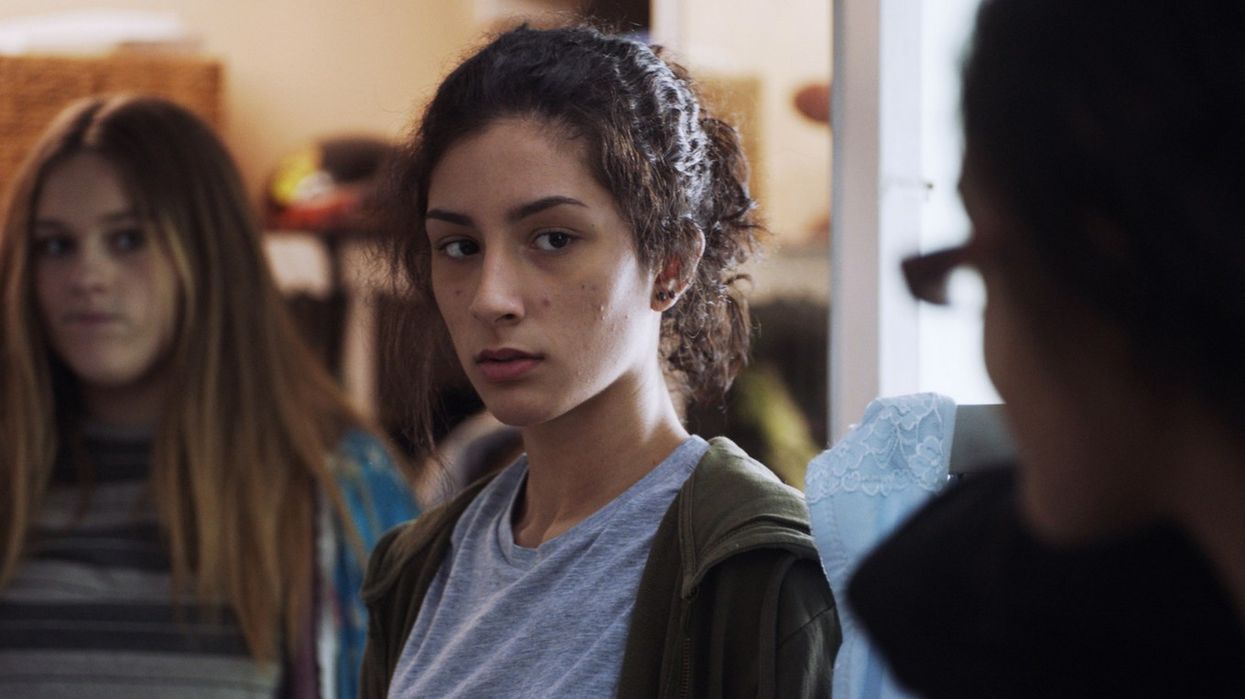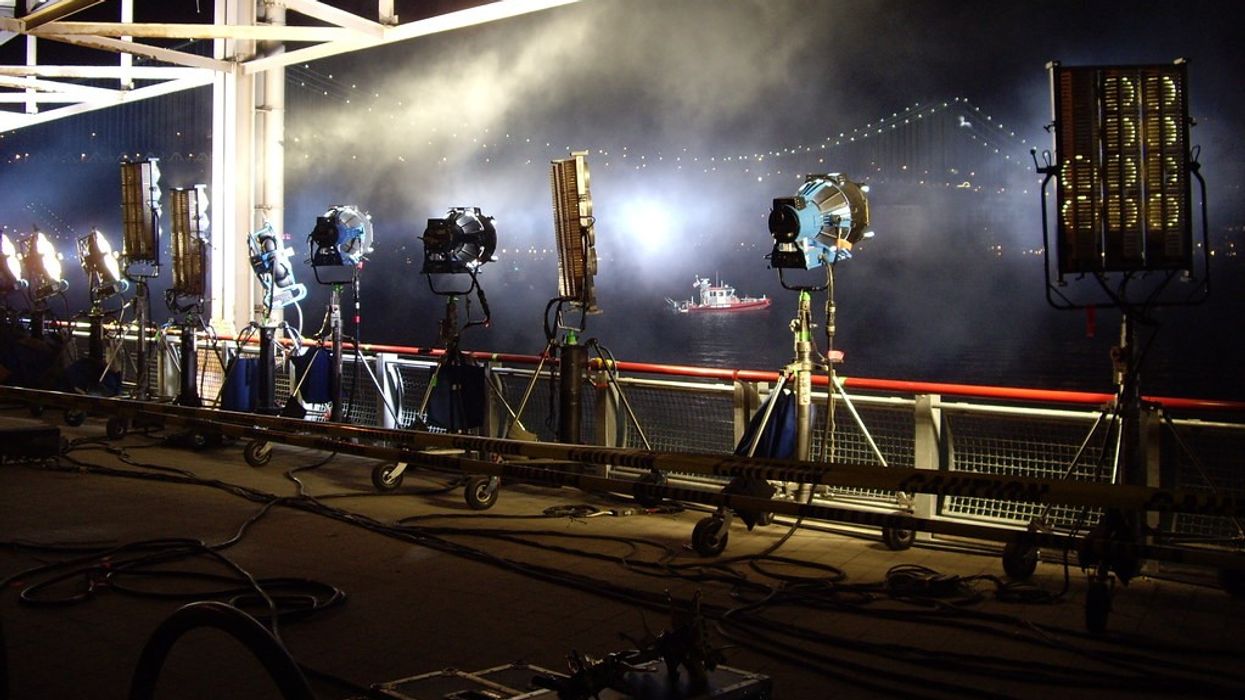How Laurel Parmet Learned to Master Directing Teens in Her Two Award-Winning Films
Along with some accomplished fight choreography, filmmaker Laurel Parmet takes only eight minutes to document the destruction of a friendship.

Director Laurel Parmet is no stranger to No Film School readers. After Spring, her quietly intense short which examined the delicate friendship between two young women, premiered at SXSW in 2017, our own Emily Buder spoke with the filmmaker about what it took to get that project to the screen. And just one year later, at SXSW 2018, Parmet returned to Austin, Texas with a new short, Kira Burning, a thematic follow-up that portrayed a different kind of adolescent longing.
Told over the course of one late afternoon, Kira Burning is a narrative about revenge and the regret that often comes as a result of seeing it through. After being scorned by a friend who shares a playful yet risqué video over social media, the teenage Kira and her friends break into her (former) best friend's home, ransacking the place and looking for any "incriminating" material that they can use as blackmail. When the friend arrives home with Kira still in the house, a physical altercation ensues and all hell breaks loose.
As the film screens as part of the NoBudge Shorts Program featured in the Museum of Modern Art's The Future of Film is Female series, No Film School spoke with Parmet about location scouting, working with teen actors, and shooting fight scenes. Her film can be viewed below.
No Film School: We covered your previous short film, Spring, when it premiered at SXSW in 2017. What was the experience of getting that film out into the world like and how quickly did you jump into this latest one?
Laurel Parmet: Having Spring premiere at SXSW was pretty huge for me, as I met so many people and made tons of connections out of the experience. Getting it out into the world allowed the film to receive a really positive response and it seemed to resonate with a lot of people. It gave me confidence and really inspired me to just keep going, to start working on a feature.
I actually had already completed Kira Burning when I went to SXSW with Spring, so I had that in my pocket ready to go! It was actually pretty useful when I would meet with people and they'd ask, "What else do you have?"
NFS: As a director, what did you bring to Kira Burning that you learned while making Spring? Were there certain pitfalls you knew to avoid this time around?
Parmet: I think I learned a lot about the casting process from Spring. This time around during auditions, I didn't think too much about the performances in the room. I put more emphasis on watching the videos afterward. This might not be right for everyone, but that process is definitely best for me.
"I spend a lot of time with my actresses beforehand connecting and building the characters together. I want them to feel like it's just as much their story as it is mine."
NFS: Both of your films feature teenage girls finding themselves in some pretty tough situations. How do you establish an environment on set that allows your actresses to be both comfortable and subsequently daring in their performances?
Parmet: It's just about trust and making it a conversation. I spend a lot of time with my actresses beforehand connecting and building the characters together. I want them to feel like it's just as much their story as it is mine.
When we're on set, I work to keep it low-stress. I want them to be comfortable, to be ready to explore and try things out. So much of it also comes down to the casting, bringing actresses to the project who are self-aware and sensitive, and who can handle more difficult material.

NFS: What was the casting process like for Kira Burning?
Parmet: I won't lie, it took a really long time. I didn't have a physical, visual image of Kira in my head—it was more of an emotional thing—and that made the character really hard to cast. I also wanted the characters to feel like real teenagers; a lot of child-actors have a certain "actor-y" thing about them, which I wanted to avoid.
I spent a lot of time reaching out to high schools, going to dance classes in Brooklyn and Queens, approaching girls on the subway (not in a creepy way! I gave them my card and told them to have their parents reach out). I cast as wide a net as possible and made a pact with myself that I wouldn't settle until I found what I wanted. It wasn't easy, but I persisted and eventually found my dream girls.
"The Angeniuex Optimo zoom lenses are beautiful, simple and flexible, especially wide open."
NFS: What camera and lenses did you shoot with and what did it bring to this particular production?
Parmet: We shot on the Alexa Mini with Angenieux Optimo zoom lenses. My DP and I love working with the Alexa, and the Angeniuex are beautiful, simple and flexible, especially wide open. They bring a really organic characteristic that you don't normally see in a zoom.
NFS: How long was the shoot?
Parmet: Five days. And of course, our day of shooting exteriors in the park was freezing-ass cold and poor Dymond Veve (who plays Kira) had to act in a tank-top. But she's hardcore and kept wanting to do more takes!

NFS: Did you have to scout all of New York City in order to find the right house to shoot in? Did any accommodations have to be made once you secured a set?
Parmet: I scouted all over Queens, I knew I wanted the film set there. I love the urban/suburban mix in that borough and it just felt right. Not many accommodations had to be made, the house was pretty great for what we needed, including ample space which is pretty difficult to come by in New York City.
However, it wasn't near a subway station, and so that was pretty inconvenient. Way more of my budget than I would have liked went to Ubers.
"Sound is always a huge part of a convincing fight scene, and I knew I wanted it to be brutal."
NFS: When the confrontation between Kira and her former best friend does ultimately take place, violence erupts and the editing works to heighten the impact of each blow without showing us everything. What went into crafting those moments, both visually and, in the case of the sound design, aurally?
Parmet: We designed the sound and picture to give the audience as visceral an experience as possible. You’re with Kira and sympathize with her for most of the film and then she does this thing that is so monstrous that you have to wrestle with how you feel about her. Do you still root for her? To me, that dilemma is made much stronger if the audience feels every punch, every kick. It makes the film's final shot that much more devastating.
We rehearsed the fight a week or two before the shoot with the actresses and a stunt coordinator. My DP, Brian Lannin, shot some tests during our rehearsals so that we could figure out which angles and moves would work best. When the day came to shoot the scene, we came with a game plan and were very prepared. The scene took almost the entire day to shoot and the girls did a great job.
Sound is always a huge part of a convincing fight scene, and I knew I wanted it to be brutal. My amazing sound designer, Luciano Vignola, and I worked to make the fight aurally visceral and wince-worthy, and that's where a lot of those deeper sounds come in.
I'm proud to say that my producer, Lisa Duva, and I did almost all of the foley work ourselves! It was really fun! Though the sound of the tooth flying out of Ruby's mouth was production sound, we actually gave her a fake tooth to spit out. In the take we used, you don't really catch it on camera but you definitely get the sound of it bouncing on the wood floor, which I think works better anyway.

NFS: The film will be screening this weekend in a NoBudge shorts block featured in the Museum of Modern Art's "The Future of Film Is Female" series. How important is the theatrical experience to films such as your's and is there a venue for short films that exists beyond a festival setting?
Parmet: There's nothing quite like watching a film in a theater with an audience. And as a filmmaker, there's nothing quite like sitting with your audience and feeling them experience your film in real time. I get such an adrenaline rush from it. You're like, "Oh yeah, THIS is why I spent the last year of my life making this thing and putting myself through emotional hell!" It's just the best.
Specifically with Kira Burning, I think the viewing experience is better in a theater particularly because of the sound design. A lot of it is lost when played on tinny laptop speakers (though I always wear headphones!) I'm so excited to see it screen in a MoMA theater, as it's been one of my all-time favorite places ever since I was a kid.
All that said, the online venues today offer incredible exposure and opportunity and are just as important as film festivals. The audiences you get online are so much bigger! Places like Vimeo and Short of the Week are fantastic places for getting your work out there, and they're also incredibly supportive of their filmmakers. With Spring, I did the more traditional strategy of touring the festival circuit and waiting months and months to do the online premiere. But for Kira Burning, after it played at SXSW, I realized that it would actually benefit me to get the film online faster and get more eyes on it.
As a result, Kira Burning went online a few months later as a Vimeo Staff Pick Premiere and on Short of the Week. The film still plays at festivals, however, and there doesn't have to be an either/or. Short of the Week actually just released a great article on the idea of "being everywhere at once" with your film and I think that's brilliant advice.











